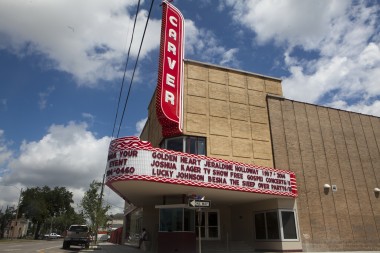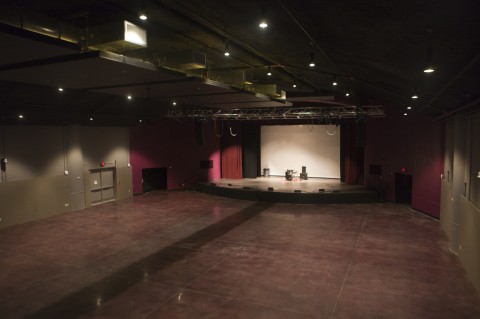Stepping into the renovated Historic Carver Theater is almost like getting a car from a dealer for the first time. It smells brand new.
You can smell the fresh wood and the recently applied wax.
Yet the marquee, the hallway and lobby look almost exactly as they did in the 1950s.
“People, when they come to the Carver, they’re going to feel like they’re going back in time,” said Dino Marshall, managing director of the theater. “It’s a nostalgic place and it’s been restored almost to its original form.”
The theater was partially destroyed during Hurricane Katrina in 2005 and reopened on April 30 as an performing arts and events venue.
The Carver’s history began in 1950 when it opened as a state-of-the-art theater for blacks in Tremé, one of the oldest black neighborhoods in the country. It closed in the late 1970s, and reopened again in 1984 as a medical clinic.

Eugene Oppman started working at the clinic in 1987 as an optometrist. Four years later, he bought the clinic for $240,000.
“Every penny that I used to buy that building, I earned in that building,” Mr. Oppman said.
After Katrina, the building was under 5 feet of water for two weeks. The clinic was destroyed, but the structure of the building endured.
Mr. Oppman knew he wanted to transform the space back to a theater.
“The city had changed so much. All the patients were gone. There were no children, no elderly,” he said. “I knew it was never going to be a medical facility again. I thought we would try to do something fun here.”
Initially, not everyone was as enthusiastic as Mr. Oppman.
“People told him that he was crazy. I sort of believed the same thing when I heard about the project,” Mr. Marshall said. “He apparently saw something that no one else did, and it’s going to pay off for him.”
The renovations were originally budgeted at $600,000, but the project grew over the years with the final cost of renovations exceeding $8 million.
“We have the best light system in the city and arguably the best sound system,” Mr. Marshall said. “We are very proud of the sound and lights that we have, and the people that we have operating them are amazing also.”
Aside from bringing in music and cultural performances, Mr. Oppman wants to bring in more jobs for Tremé. The Carver works as a nonprofit organization and plans to offer free workshops and training in theater, audio and visual operations.

“Our mission is to revitalize the neighborhood,” said Allison Reinhardt, operations director of the theater. “Sort of a culture comeback, starting with the Carver.”
In the 1950s, Leah Chase, the 91-year-old owner and chef of Dooky Chase’s Restaurant, remembers walking a mile and a half from her home in the Seventh Ward to the Tremé neighborhood to take her four children to the movies at the Carver. She would order two hotdogs for each of them.
“That was our weekly outing. That was all we could do,” Ms. Chase said. “The theater was like the heart of the street. People came from all around.”
On Saturdays, the theater offered free admission to anyone who brought in 10 Pepsi bottle caps.
It was easy for Ms. Chase, who owned the restaurant two blocks away from the theater.
“I’ve got enough tops to bring the neighborhood with me,” she said. “That was too funny.”
Ms. Chase hopes to see The Carver booming again.
“I told the gentleman who is in charge, ‘Whatever it is, you do it right,’” she said. “If they have nice entertainment, it will bring other people in. And when you have other people coming in, that’s good for the neighborhood.”